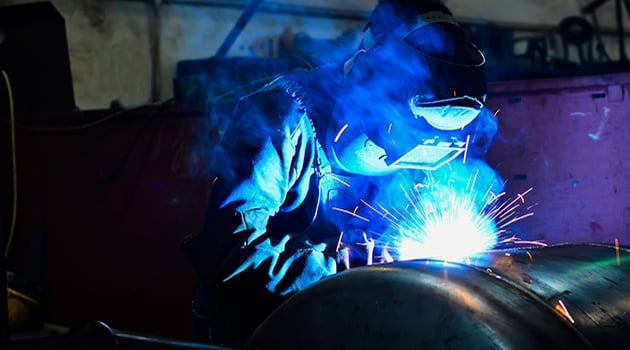
In high-stress conditions, even the strongest and most durable metal component will eventually be prone to cracking. While precautions can be taken, we haven’t always understood exactly how these cracks develop or when a component is likely to become unreliable. And if a component does fail, the consequences can be terrible.
This kind of damage is the result of cycling loading, a process in which the component is subject to repeated stress on a continuous basis. The material begins to degrade and ultimately starts to develop cracks: a phenomenon known as metal fatigue. Some materials, such as nickel alloys, are specially developed to be resistant to fatigue. However, even a highly resistant component will eventually succumb, and it’s historically been impossible to predict exactly when this will happen.
So how can you protect against a risk you can’t actually anticipate? In high-stakes sectors, such as the airline industry, it’s standard practice to replace components before they can develop the degree of cracking that ultimately leads to failure. This is an expensive strategy, but until recently it’s been the safest option. After all, lives are at stake.
New methods of identifying stress cracking
However, researchers from Johns Hopkins University recently discovered a new way to identify stress cracking before it can even develop. They subjected materials to repetitive stress on a rapid cycle and recorded the microscopic changes that occurred within the metal. The results, which were published in the journal Science in October 2020, clearly show that micron-scale damage tends to occur in the location where the first crack will finally appear.
This is a major breakthrough. The testing methods we already have at our disposal tend to focus on the point immediately before, or immediately after, the appearance of that first crack. But as the Johns Hopkins team has shown, it’s actually possible to pinpoint the damage at a much earlier stage. And this not only makes it easier to understand how stress cracking develops; it also means we are better able to identify exactly where and when it’s likely to happen.
“We’re able now to have a more fundamental understanding about what leads up to cracks,” says Jaafar A. El-Awady, professor of mechanical engineering at Johns Hopkins. “The practical implication is that it will allow us to understand and predict when or how the material is going to fail.”
The safety implications of this are obvious. Predicting stress cracking will be instrumental in heading off potential failures before they even start. But there’s an economic benefit, too. Components can be replaced when they actually become vulnerable, cutting both waste and expenditure.
The future looks very different for those who work with, and rely on, metal components. Specially designed nickel alloys are already a lifesaver – literally and financially – in high-stress, high-pressure sectors. This new testing method will potentially extend their lifespan even further and add a new dimension of user safety, benefiting everyone in the process.
 Predicting Metal Stress-Cracking: The Future of Working with Metal Alloys
Predicting Metal Stress-Cracking: The Future of Working with Metal Alloys

